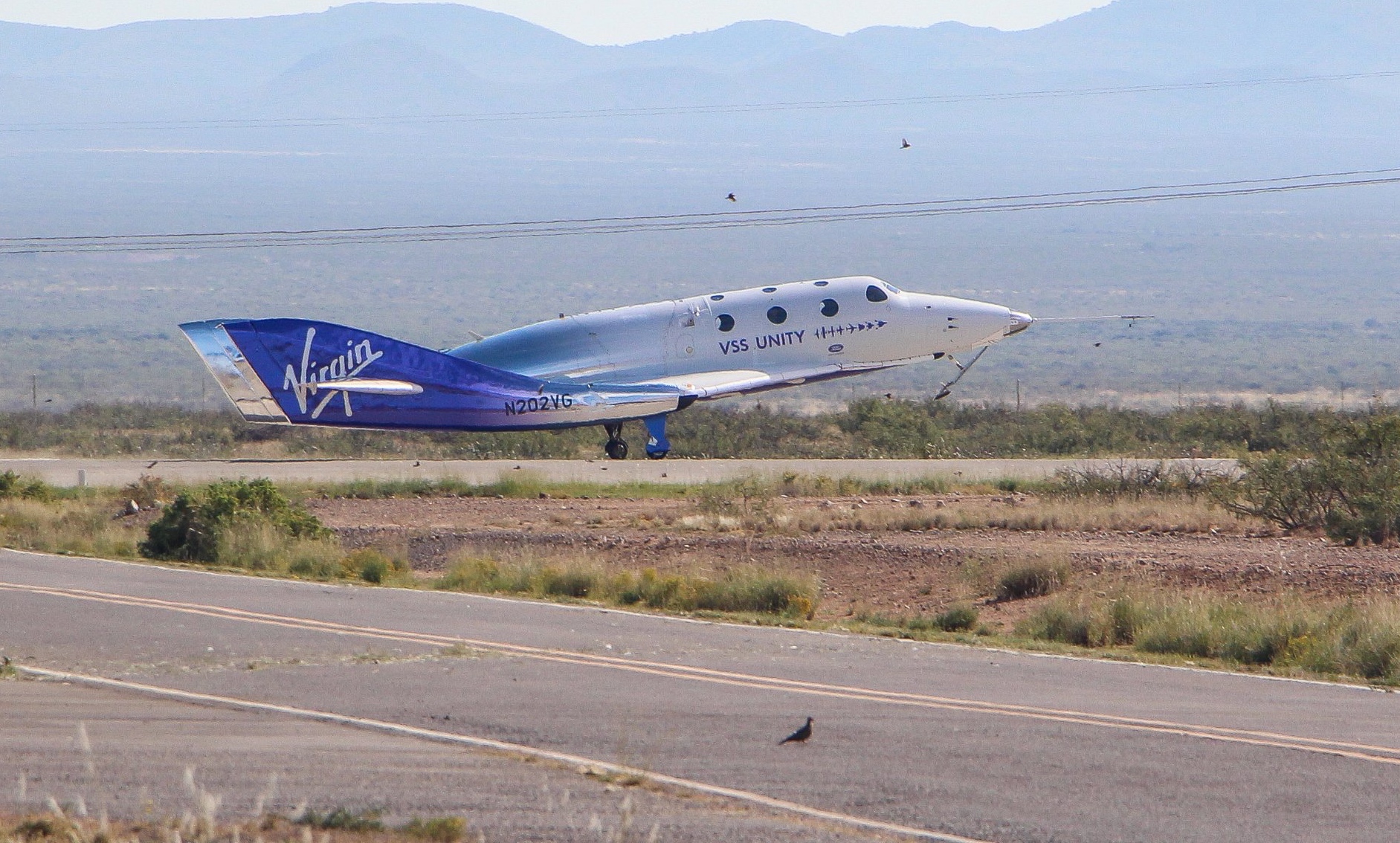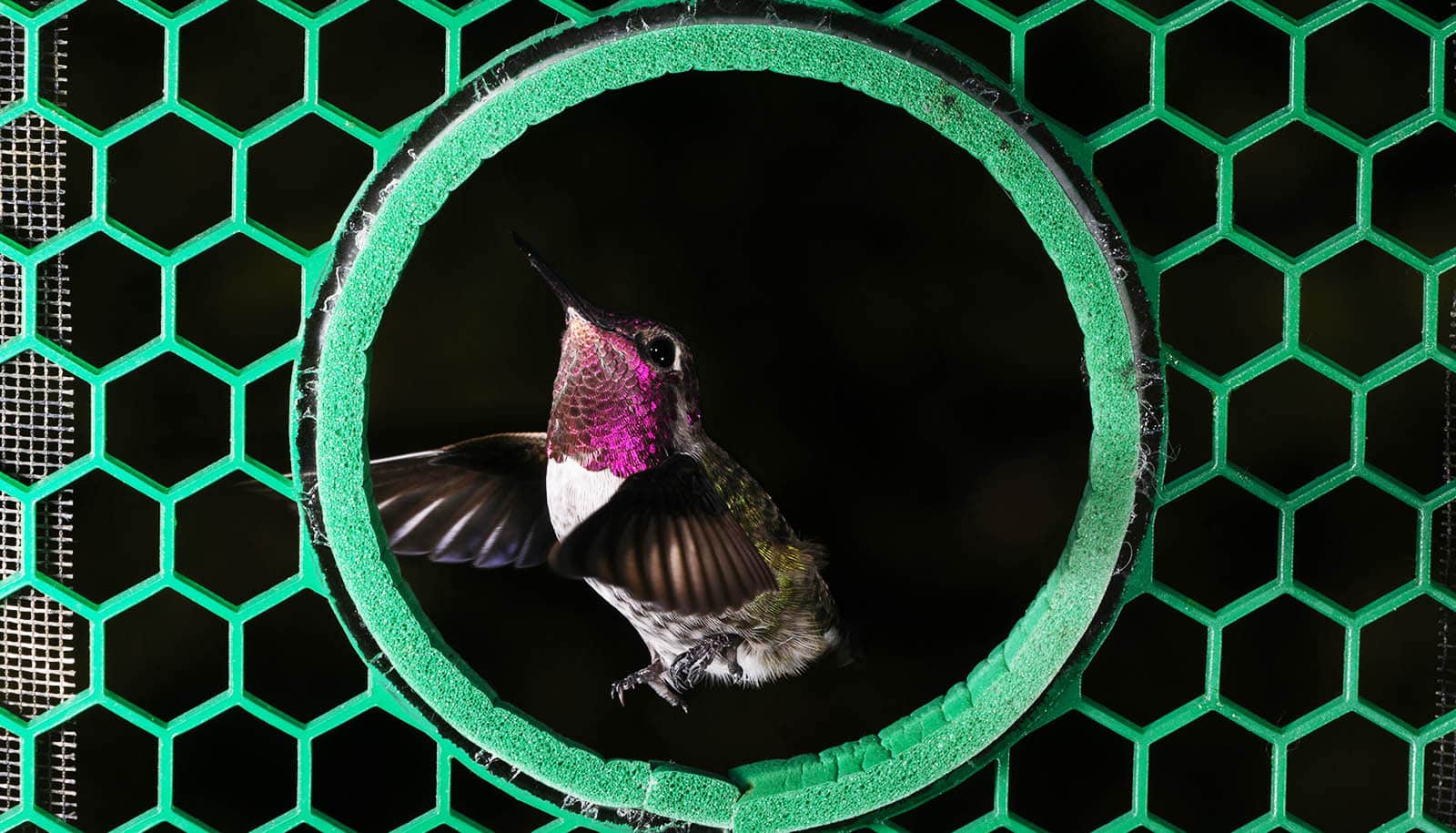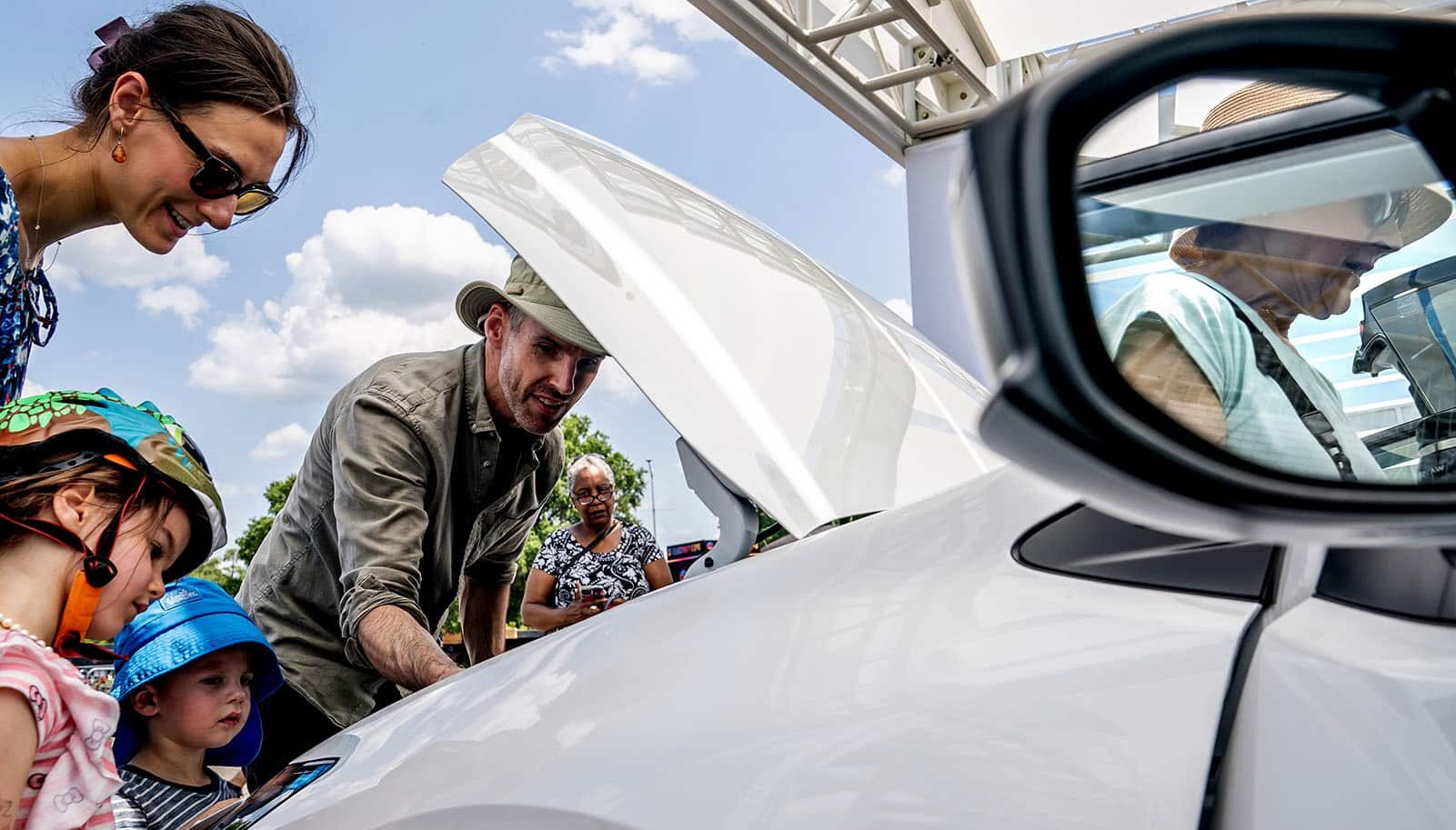Share this
Article
You are free to share this article under the Attribution 4.0 International license.
Hummingbirds use two unique strategies for flying through gaps in vegetation, report researchers.
Most birds that flit through dense, leafy forests have a strategy for maneuvering through tight windows in the vegetation—they bend their wings at the wrist or elbow and barrel through.
But hummingbirds can’t bend their wing bones during flight, so how do they transit the gaps between leaves and tangled branches?
A study published today in the Journal of Experimental Biology shows that hummingbirds have evolved their own strategies, which have not been reported before, likely because hummers maneuver too quickly for the human eye to see.
For slit-like gaps too narrow to accommodate their wingspan, they scooch sideways through the slit, flapping their wings continually so as not to lose height.
For smaller holes—or if the birds are already familiar with what awaits them on the other side—they tuck their wings and coast through, resuming flapping once clear.
“They seem to do the faster method, the ballistic buzz-through, when they get more acquainted with the system.”
“For us, going into the experiments, the tuck and glide would have been the default. How else could they get through?” says Robert Dudley, a professor of integrative biology at the University of California, Berkeley, and senior author of the paper. “This concept of sideways motion with a total mix-up of the wing kinematics is quite amazing—it’s a novel and unexpected method of aperture transit. They’re changing the amplitude of the wing beats so that they’re not dropping vertically when they do the sideways scooch.”
Using the slower sideways scooch technique may allow birds to better assess upcoming obstacles and voids, thereby reducing the likelihood of collisions.
Why study hummingbirds?
“Learning more about how animals negotiate obstacles and other ‘building-blocks’ of the environment, such as wind gusts or turbulent regions, can improve our overall understanding of animal locomotion in complex environments,” notes first author Marc Badger, a 2016 PhD graduate of UC Berkeley. “We still don’t know very much about how flight through clutter might be limited by geometric, aerodynamic, sensory, metabolic, or structural processes. Even behavioral limitations could arise from longer-term effects, such as wear and tear on the body, as hinted at by the shift in aperture negotiation technique we observed in our study.”
Understanding the strategies that birds use to maneuver through a cluttered environment may eventually help engineers design drones that better navigate complex environments, he notes.
“Current remote control quadrotors can outperform most birds in open space across most metrics of performance. So is there any reason to continue learning from nature?” says Badger. “Yes. I think it’s in how animals interact with complex environments. If we put a bird’s brain inside a quadrotor, would the cyborg bird or a normal bird be better at flying through a dense forest in the wind? There may be many sensory and physical advantages to flapping wings in turbulent or cluttered environments.”
Mind the gap
To discover how hummingbirds—in this case, four local Anna’s hummingbirds (Calypte anna)—slip through tiny openings, despite their inability to fold their wings, Badger and Dudley teamed up with UC Berkeley students Kathryn McClain, Ashley Smiley, and Jessica Ye.
“We set up a two-sided flight arena and wondered how to train birds to fly through a 16-square-centimeter gap in the partition separating the two sides,” Badger says, noting that the hummingbirds have a wingspan of about 12 centimeters (4.75 inches). “Then, Kathryn had the amazing idea to use alternating rewards.”
That is, the team placed flower-shaped feeders containing a sip of sugar solution on both sides of the partition, but only remotely refilled the feeders after the bird had visited the opposite feeder. This encouraged the birds to continually flit between the two feeders through the aperture.
The researchers then varied the shape of the aperture, from oval to circular, ranging in height, width, and diameter, from 12 cm to 6 cm, and filmed the birds’ maneuvers with high-speed cameras. Badger wrote a computer program to track the position of each bird’s bill and wing tips as it approached and passed through the aperture.
They discovered that as the birds approached the aperture, they often hovered briefly to assess it before traveling through sideways, reaching forward with one wing while sweeping the second wing back, fluttering their wings to support their weight as they passed through the aperture. They then swiveled their wings forward to continue on their way.
“The thing is, they have to still maintain weight support, which is derived from both wings, and then control the horizontal thrust, which is pushing it forward. And they’re doing this with the right and left wing doing very peculiar things,” Dudley says. “Once again, this is just one more example of how, when pushed in some experimental situation, we can elicit control features that we don’t see in just a standard hovering hummingbird.”
The ‘ballistic buzz-through’
Alternatively, the birds swept their wings back and pinned them to their bodies, shooting through—beak first, like a bullet—before sweeping the wings forward and resuming flapping once safely through.
“They seem to do the faster method, the ballistic buzz-through, when they get more acquainted with the system,” Dudley says.
Only when approaching the smallest apertures, which were half a wingspan wide, would the birds automatically resort to the tuck and glide, even though they were unfamiliar with the setup.
The team pointed out that only about 8% of the birds clipped their wings as they passed through the partition, although one experienced a major collision. Even then, the bird recovered quickly before successfully reattempting the maneuver and going on its way.
“The ability to pick among several obstacle negotiation strategies can allow animals to reliably squeeze through tight gaps and recover from mistakes,” Badger notes.
Dudley hopes to conduct further experiments, perhaps with a sequence of different apertures, to determine how birds navigate multiple obstacles.
The work had funding from the National Science Foundation.
Source: UC Berkeley










